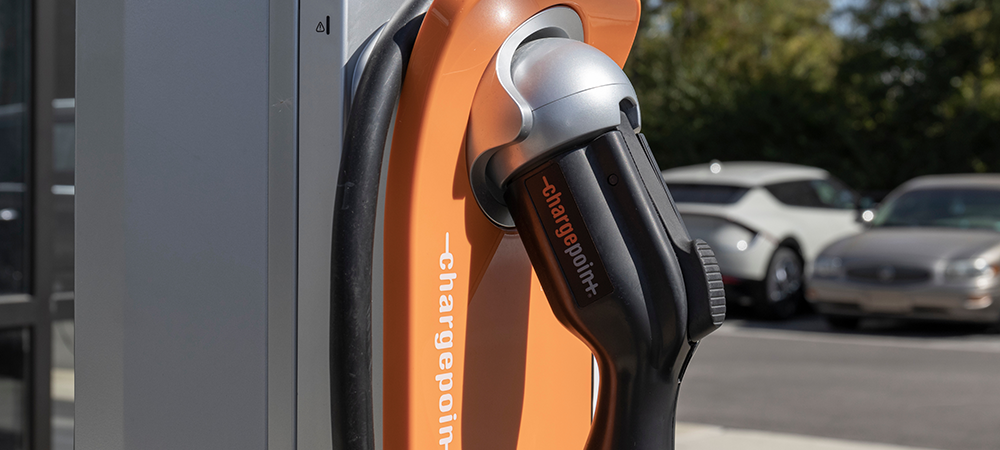We hear from Will Temperley, Founder of Fortis Foundation, about the crucial role local authorities play in the success of ChargePoint rollouts amidst the global shift towards electric vehicles.

As countries around the world wake up to climate threats, our progression towards net zero has never been more important. Apart of this transition is shifting from petrol or diesel cars to electric cars. As the electric vehicle (EV) transition continues to ramp up, charging infrastructure is being deployed at an accelerated pace. This is even more important considering the oncoming ban on the sale of new petrol and diesel vehicles in 2035.
However, this change requires careful strategic planning from local authorities to ensure rollouts are successful and consumer demand is being met. Local authorities must consider geo-spacing, energy resources, capacity monitoring as well as raising consumer awareness and accurate budgeting, to name a few.
There are three key reasons why local authorities are vital to the success of EV ChargePoint rollouts.
The current state of the EV ChargePoint rollouts
In order to meet Net Zero targets, the UK government has committed to ending the sale of new petrol and diesel cars and vans by 2030, and by 2035 all new cars and vans will be required to have zero emissions at the tailpipe. This mean that car owners will turn to electric vehicles. But one key challenge of this, is ensuring that there are enough charging stations for all electrical vehicle owners to use, as well considerations for how long each vehicle will take to charge.
To ensure a smooth running and transition, local authorities will need to carefully plan and consider how they allocate budget, how they estimate timeframes as well as clear understanding of the different resources they need to ensure a smooth, timely project before the 2035 deadline. Here are some key considerations.
Local authorities have the power to ‘okay’ the planning needed for EV rollouts
The current infrastructure is the main issue when it comes to halted EV charging roll outs. Councils have an ever-changing list of demands, so are often focussed on solving short-term problems that demand their attention.
As rolling out EV ChargePoints to achieve Net Zero is a more long-term focussed project, councils may not always be able to priorities it. But their ability to grant planning and building will be essential to ensure towns and districts meet Net Zero goals outlined by the government.
Local authorities will be able to consider practical needs for EV rollouts
With space for charging points being another main issue, the council would need to survey every street within the area to determine what type of charger and model. There are different EV chargers so councils would need to evaluate which are most suitable, for example, some are pop-ups, some are above surface and require bollard protection, it all depends on the built environment in which they’re being placed. On street EV charging is a great solution and has the ability to adapt to 2-20 chargers depending on the length of street and number of houses it has to cater for and can be spaced on either side of the street or a linear line, so there’s a lot of flexibility depending on spacing needs.
The council would need to evaluate which pathways need to be opened up and most importantly, what timeframes are required for charging electric vehicles in each of those car parks. For example, supermarkets need a rapid charge, as generally users nip in and do their shop and are out within 30 to 40 minutes. For places where people spend longer, medium ChargePoints are necessary so that the user doesn’t have to rush back to their car and move their car to another parking space. Privately, fitting EV’s needs to be cheaper, dual ChargePoints need to be the norm, and EV car pricing needs to be more cost effective.
Local authorities are vital to communicate the transition and planning to local residents
A survey from Which? Last year, found that of 2,000 car owners, two in five respondents said the top reason they aren’t considering buying an electric car was the perceived lack of ChargePoints. If we’re to successfully make the transition to all electric vehicles by 2023, we must have the facilities for people to charge their EVs but there’s also a need to keep car owners updated on when new charging points are planned and when they will be available for the public to use.
Regular communication from the council will be vital to ensure that people feel confident in buying an electric vehicle, knowing they have multiple ChargePoints that they can access and that they won’t be delayed in their journey.
To conclude, local authorities are vital to the successful roll out of EV ChargePoint’s as they play an essential role in planning, budgeting, analysing infrastructural needs and, most importantly, keeping residents updated about the progression made to ChargePoint rollouts.




